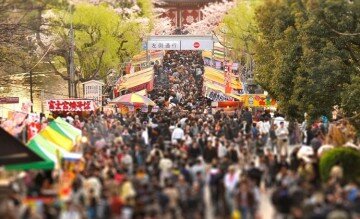This is a list of the world’s largest cities in population, ordered by several ranking methods. Determining the world’s largest cities depends on which definitions of “city” and “size” are used, and how those definitions are applied.
The largest cities in the world
The “size” of a city can refer its land area, but it is more typically the population. How one defines the land area of a city, however, is key to determining its population.
1) Tokyo, Japan
Metropolitan area: 34 million people
Population: 12.5 million
Tokyo is by far the largest urban area in the world. Despite its size and complexity, it has a network of highly efficient public transport accounting for nearly 80% of all megalopolis daily trips.
2) Mexico City, Mexico
Metropolitan area: 22 million people
Population: 8.7 million
Mexico is ten times larger than what it was in 1940. Now, with nearly 22 million people in the metropolitan area, the Mexican capital contributes about a quarter to the country’s wealth. However, with a low population growth of 0.99%, it is expected that the number of retirees will grow rapidly in the coming decades.
3) New York, United States
Metropolitan Area: 21.9 million people
Population: 8.2 million
New York City, especially Manhattan, is a role model for balancing dense development with good public transport and access to open spaces. Different in many ways, New York is the American city where most households do not have a car.
4) Sao Paulo, Brazil
Metropolitan Area: 19.6 million people
City: 11 million people
Sao Paulo, the sixth largest metropolis in the world, is also the richest city in Brazil and the most important financial center in Latin America. Poverty and crime, however, remain a big problem. An average of 6,000 people is killed each year.
5) Shanghai, China
Metropolitan Area: 17.8 million people
Population: 9.8 million people
With the increase of interior gross production and the economic capacity of China, Shanghai has become the financial and commercial center of the country with one of the world’s busiest ports largest bus system, with about a thousand lines.
6) Jakarta, Indonesia
Metropolitan area: 15 million people
Population: 9.3 million
Jakarta had to suffer major setbacks during the last decade due to the 1998 economic crisis and natural disasters such as floods and earthquakes. Since 2005, Jakarta has experienced a significant economic recovery, boosting the economy of Indonesia to a growth rate of 6%.
7) Moscow, Russia
Metropolitan Area: 13.4 million people
Population: 11.3 million people
For the second consecutive time, Moscow was named the most expensive city for expatriates in 2007. With a subway passenger whose amount exceeds that of New York and London combined, it is considered the public transport network the most widely used, circulating more than 9 million people a day.
8) Seoul, South Korea
Metropolitan Area: 23.9 million people
Population: 10.3 million
Seoul has grown rapidly since the war between the two Koreas (1950-1953). Today, almost half of the population lives in Seoul and its suburbs. In recent years, Seoul has modernized the transport system of the city and created a lot of public green spaces.
9) Mumbai, India
Metropolitan area: 21 million people
City: 13 million people
Mumbai -also known as Bombay until the name was officially changed in 1995- is the most populous city in the world. With high birth rates and the constant influx of immigrants, it is expected that the population of this city will experience a tremendous growth over the next ten years.
10) Los Angeles, United States
Metropolitan Area: 17.9 million people
Population: 3.9 million
Los Angeles is the second largest city in the United States for its size in square kilometers. It has an extensive network of roads, streets, avenues and small neighbourhoods in the center of the city.

